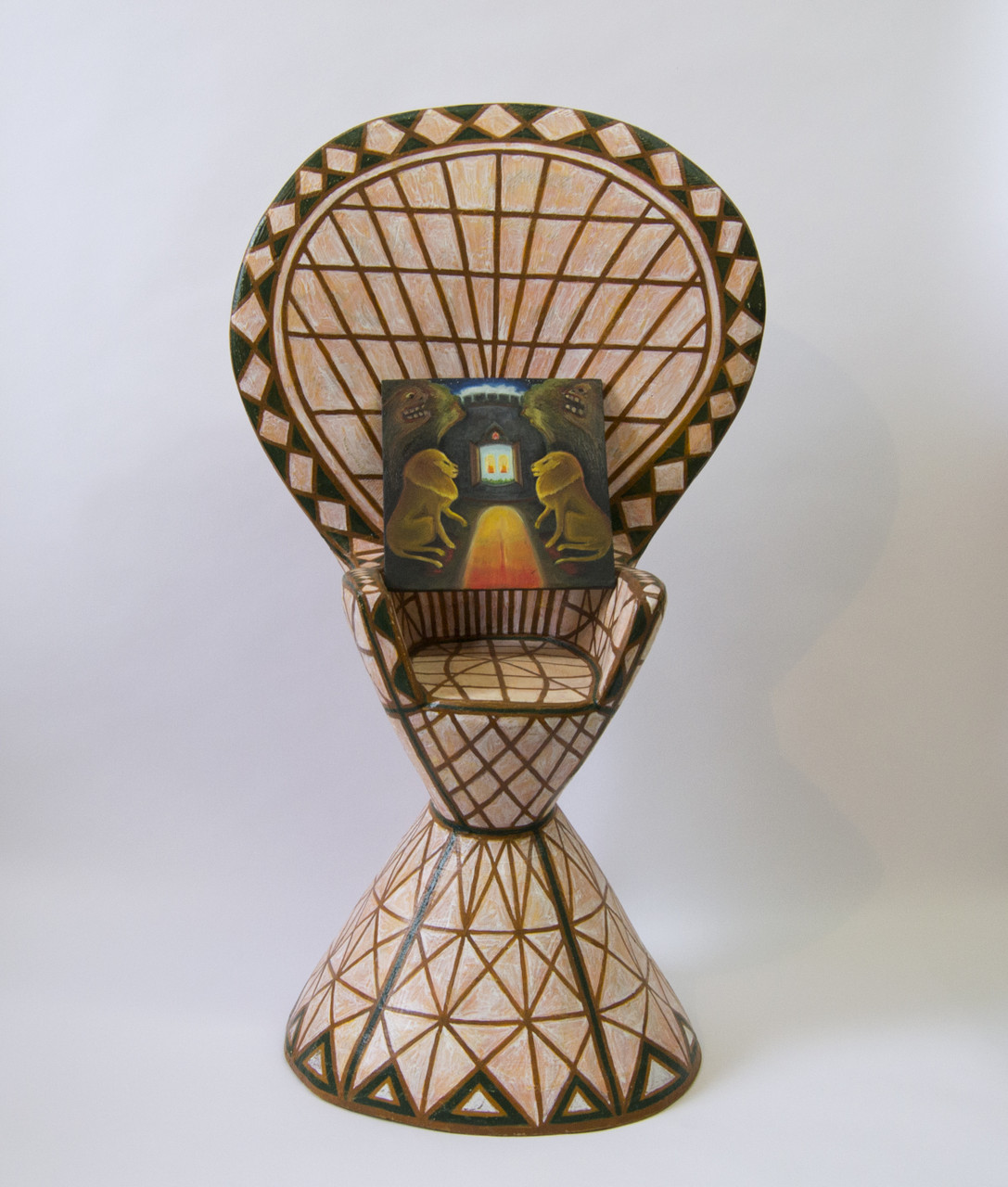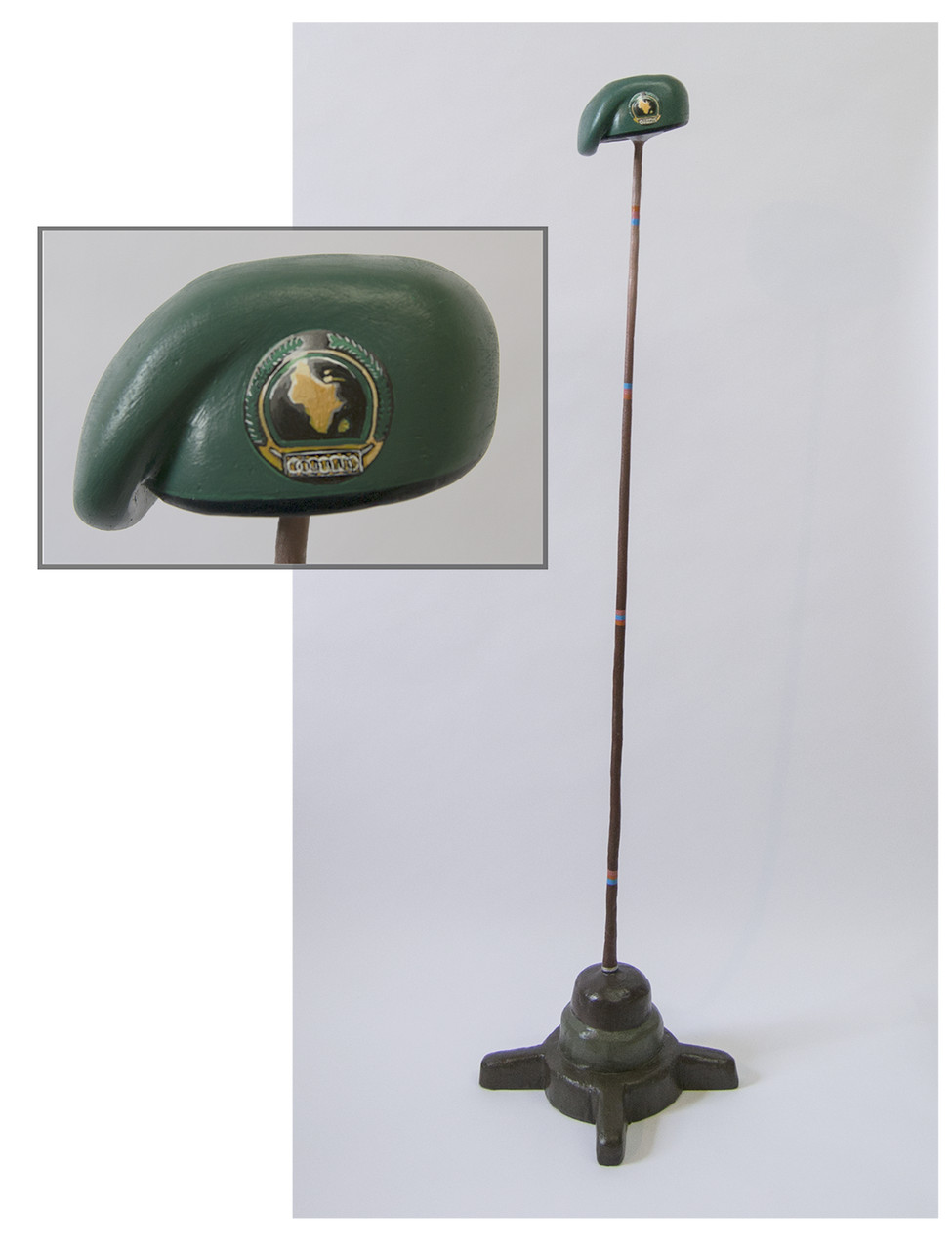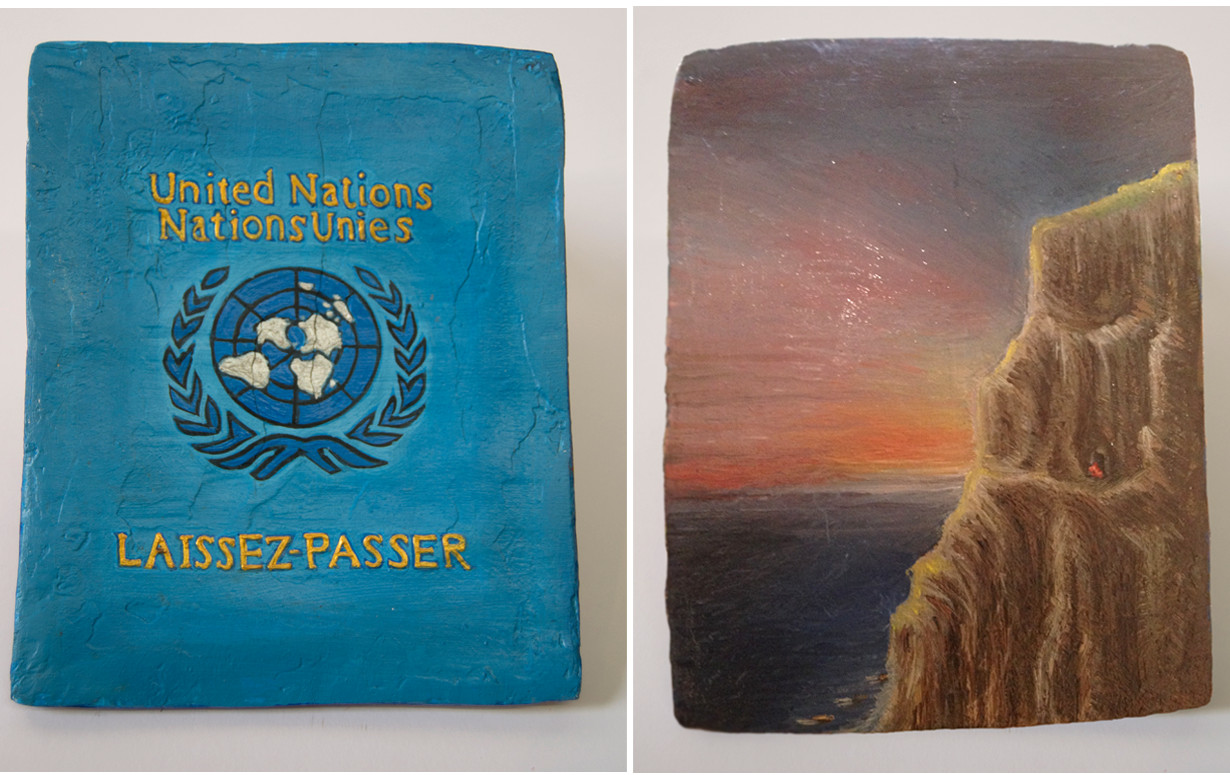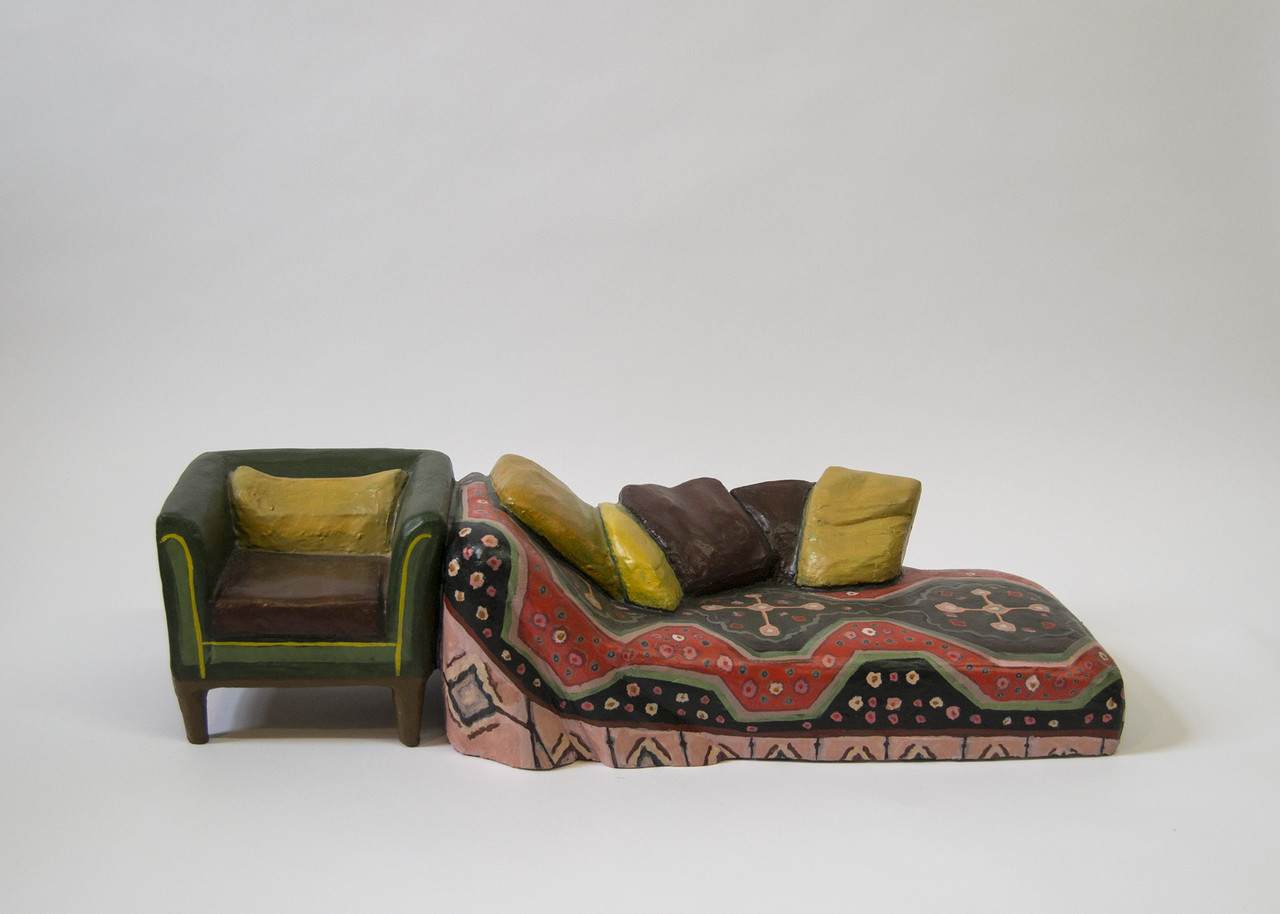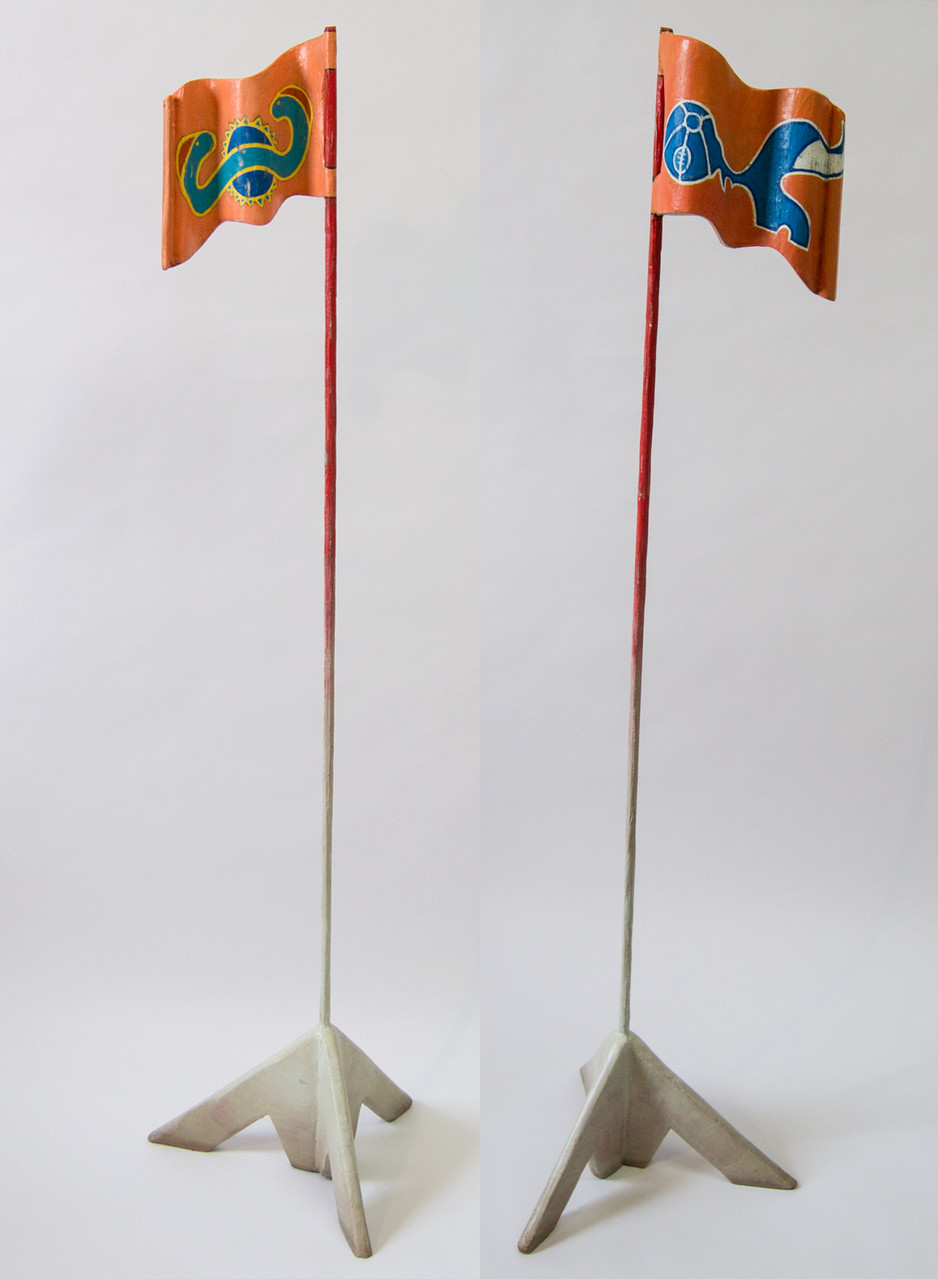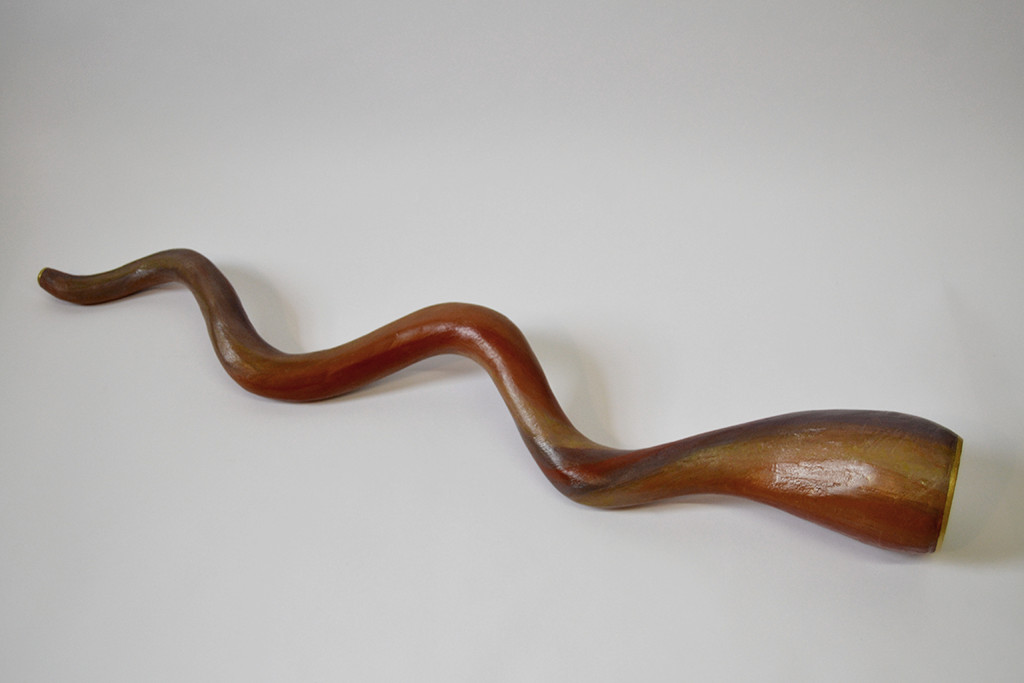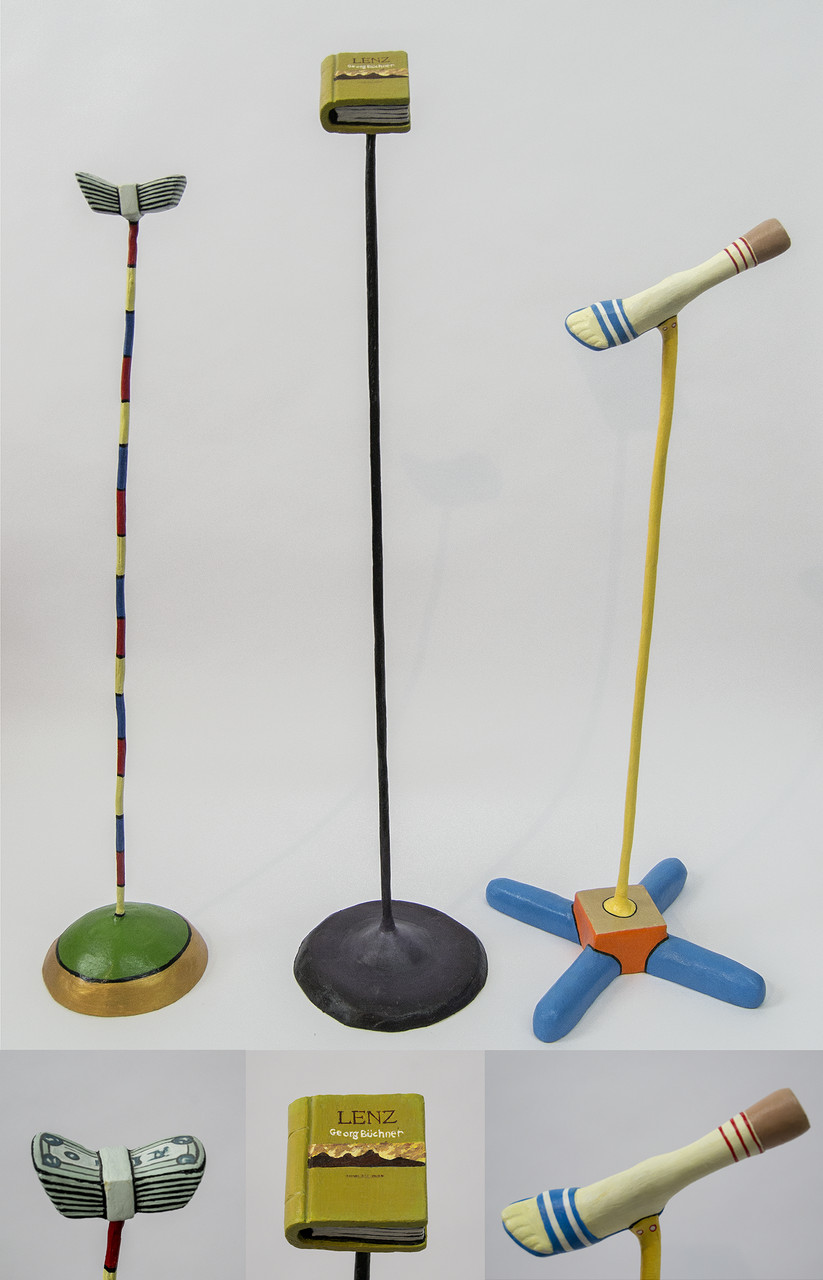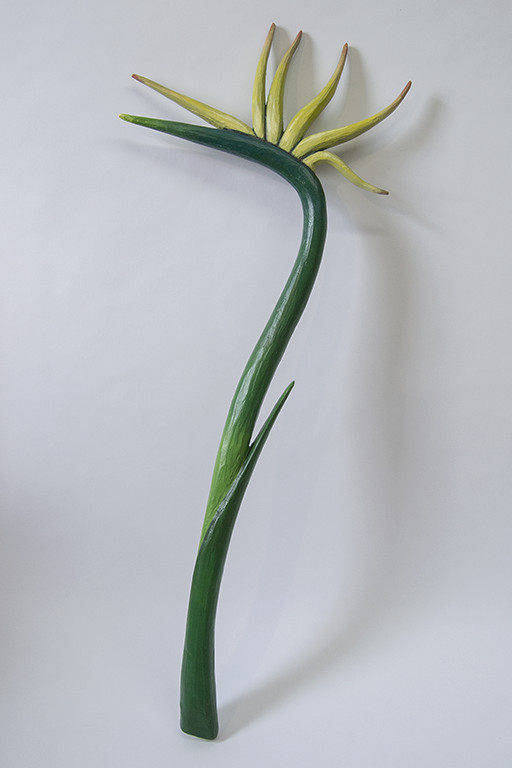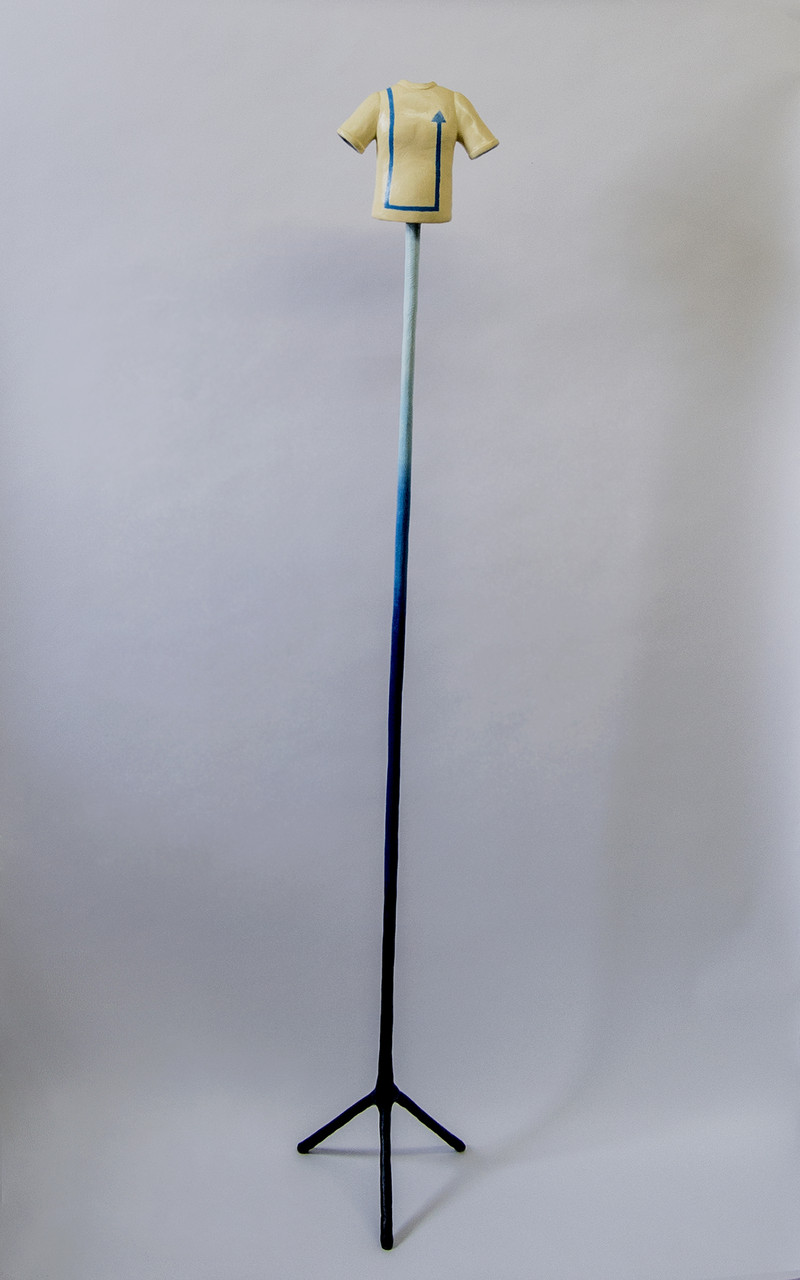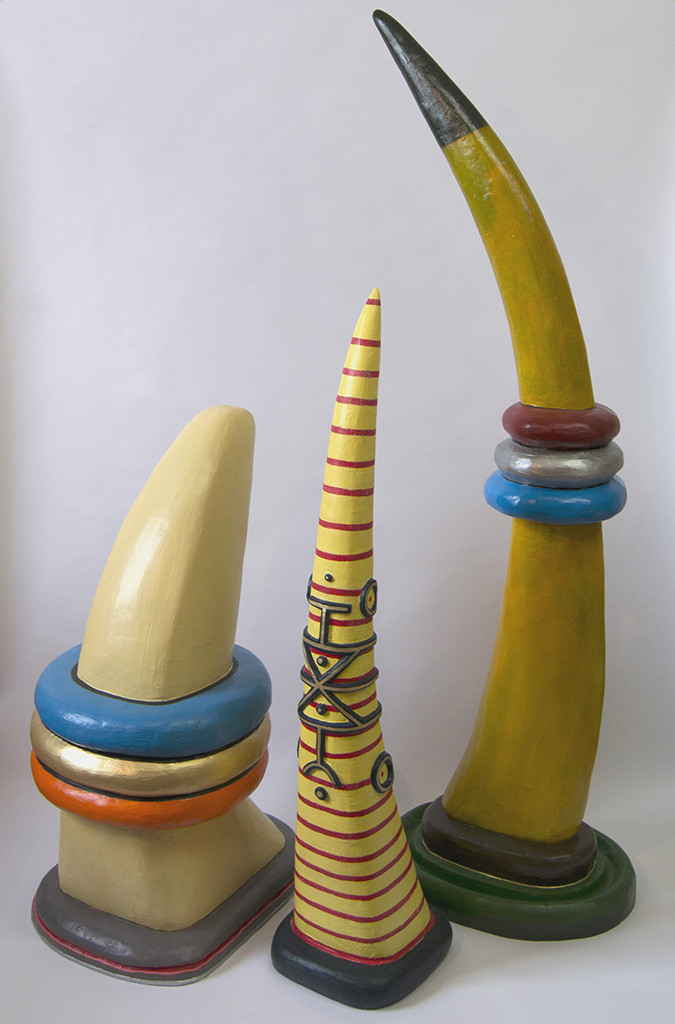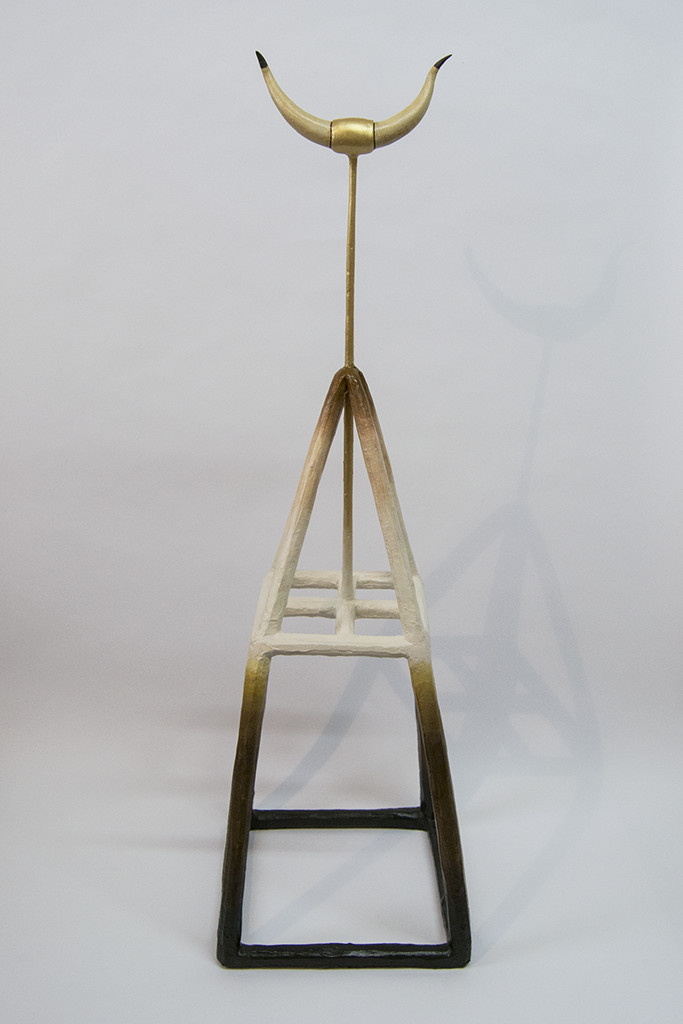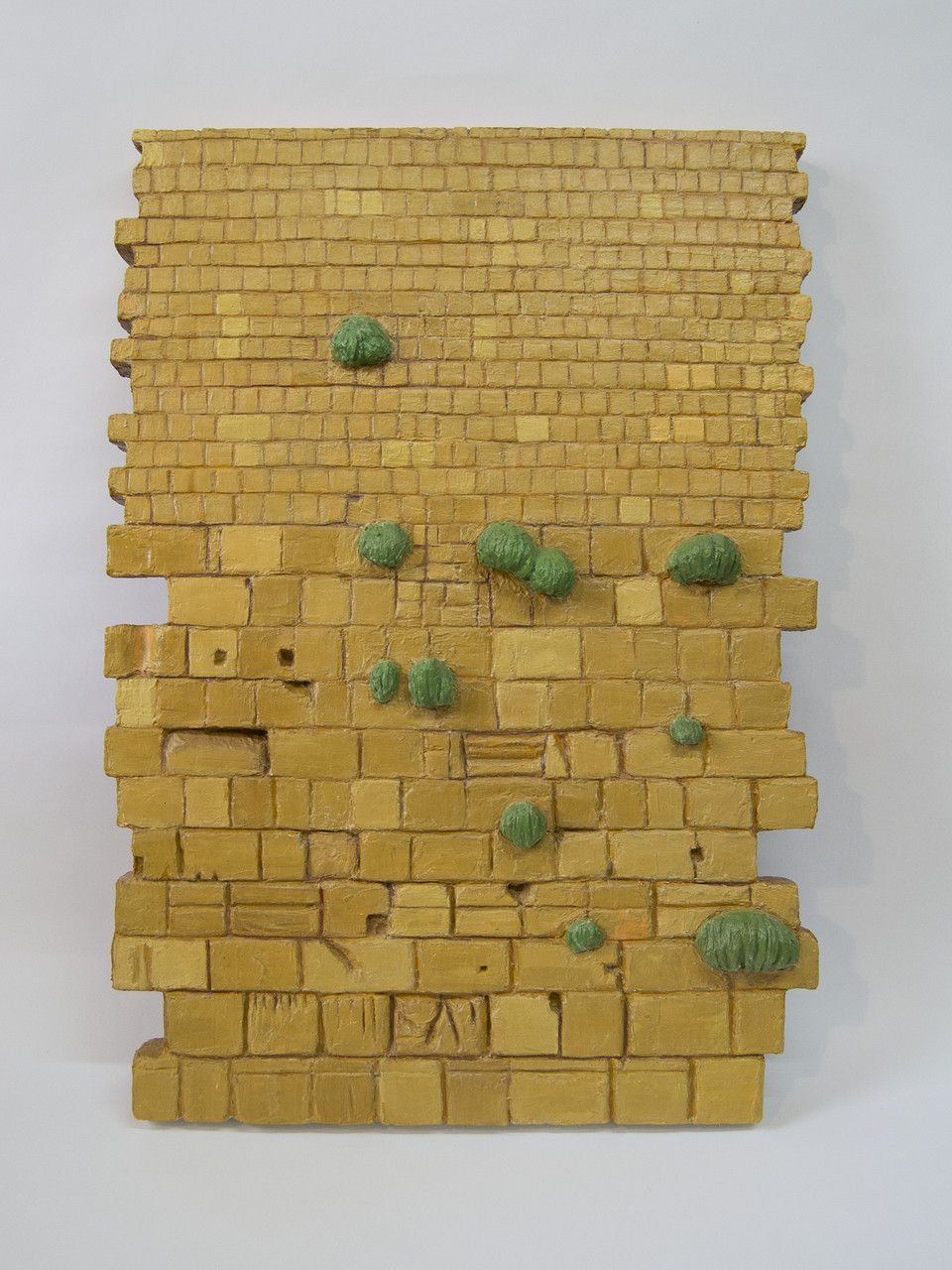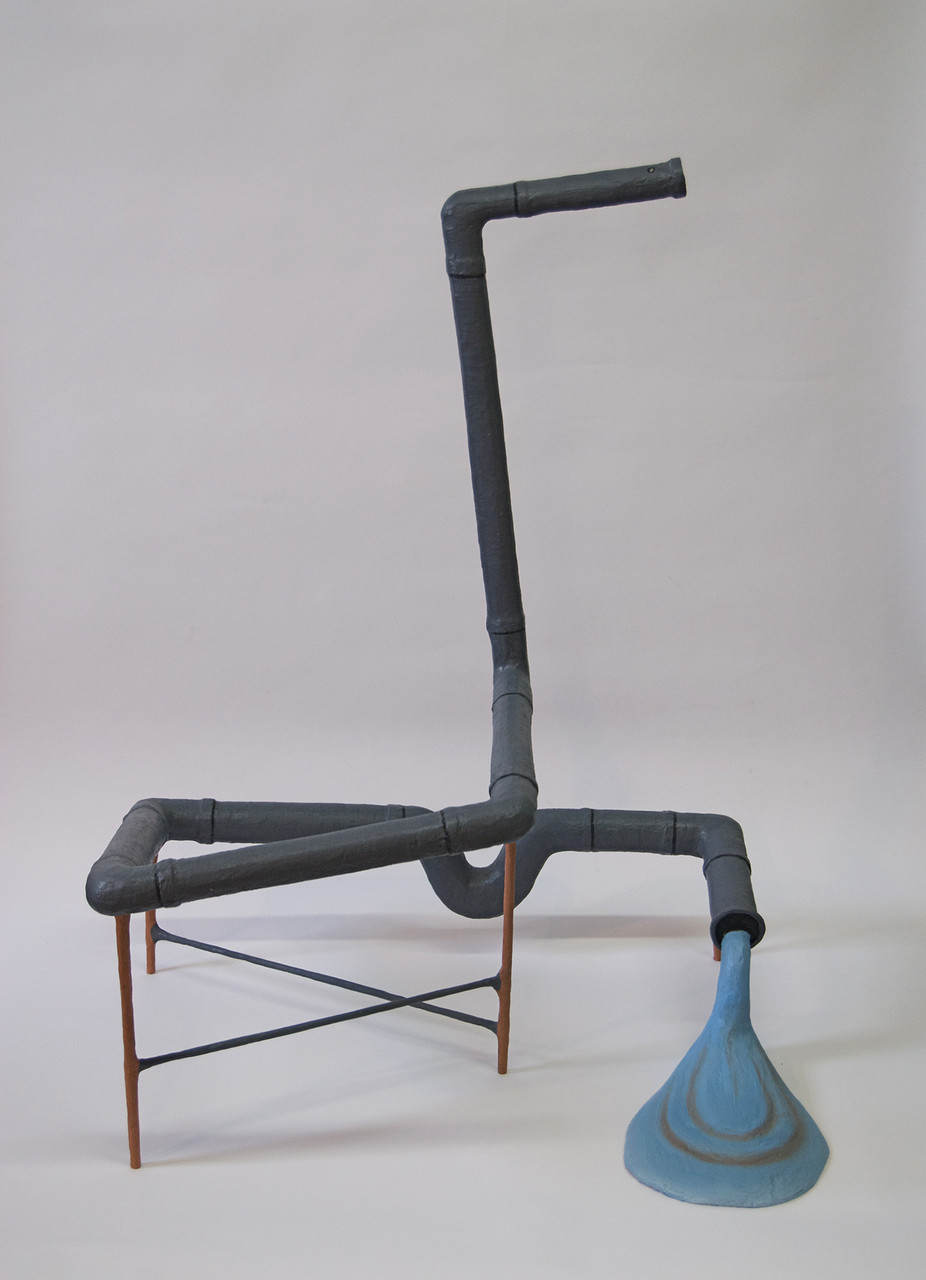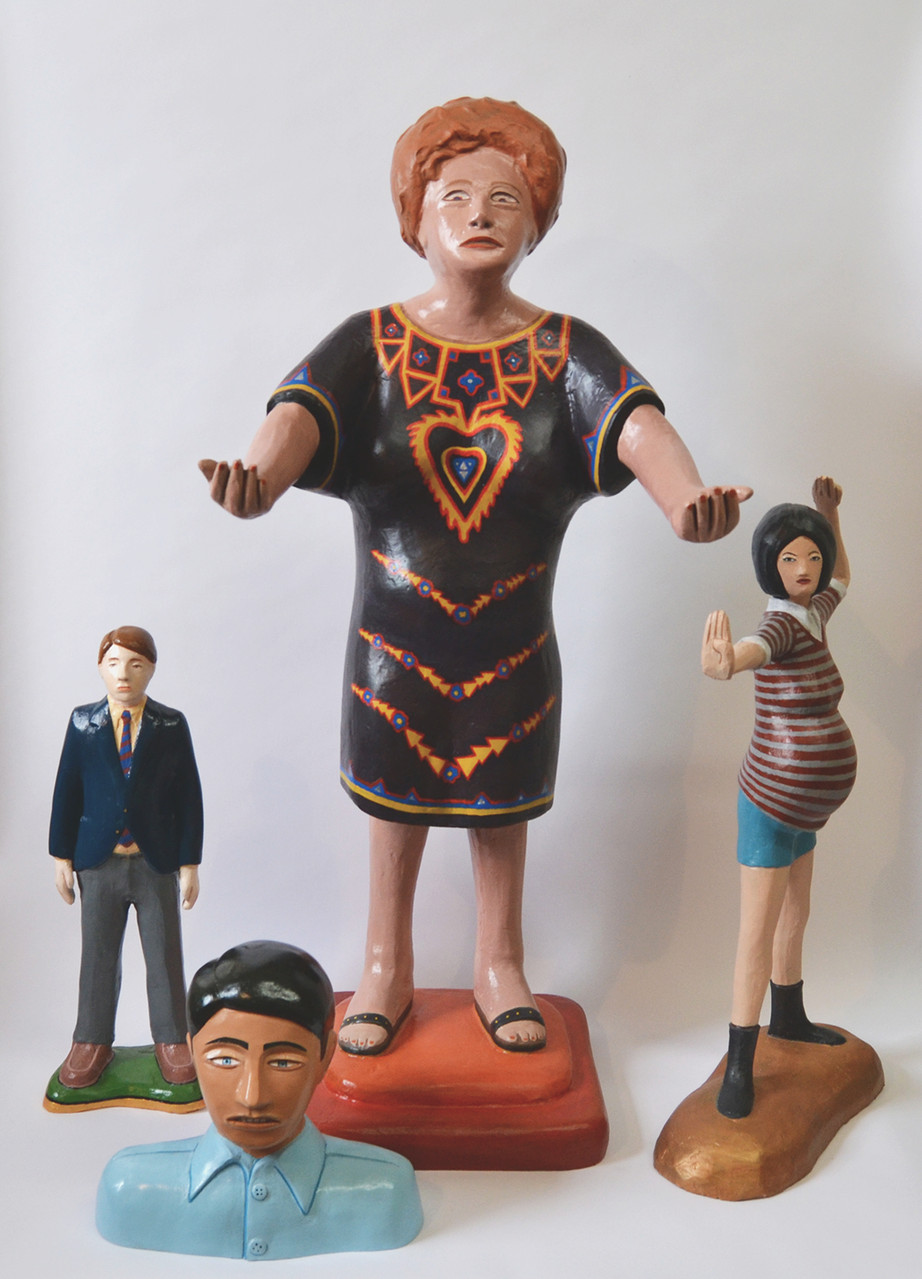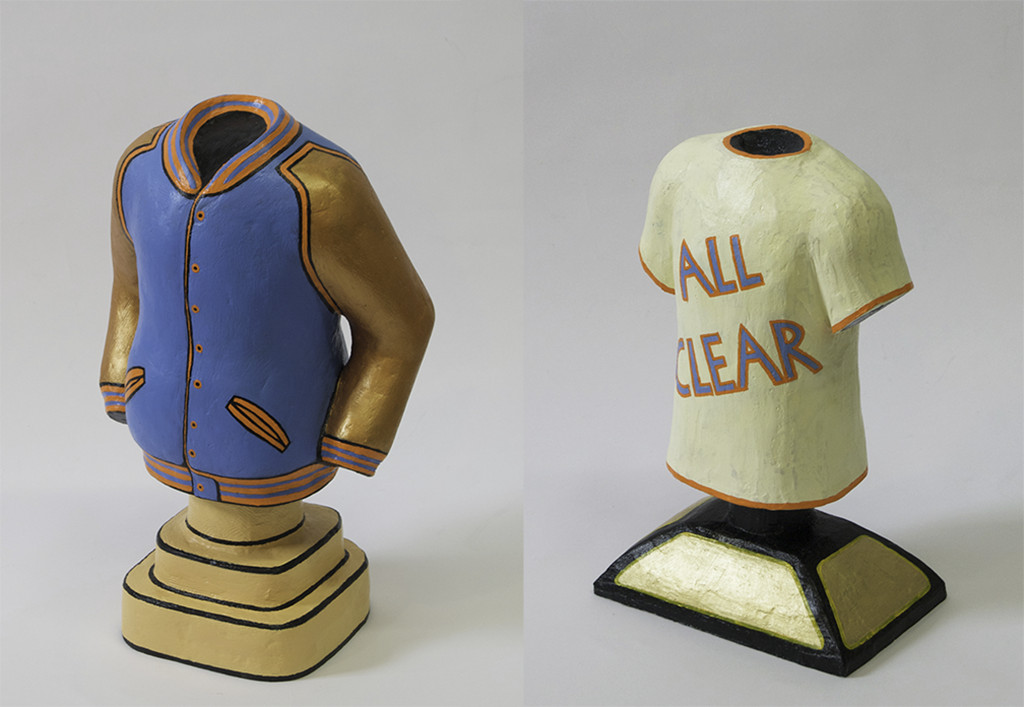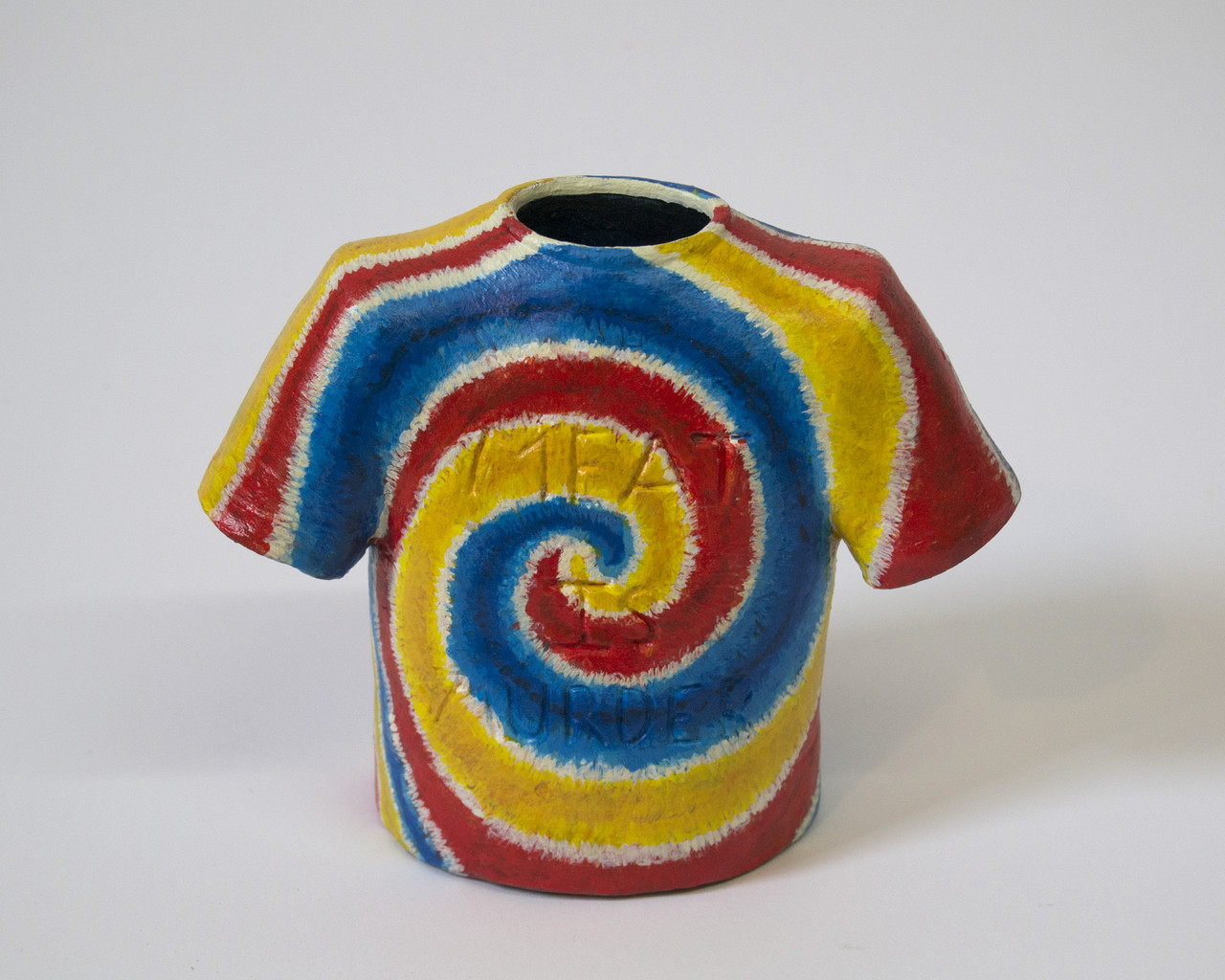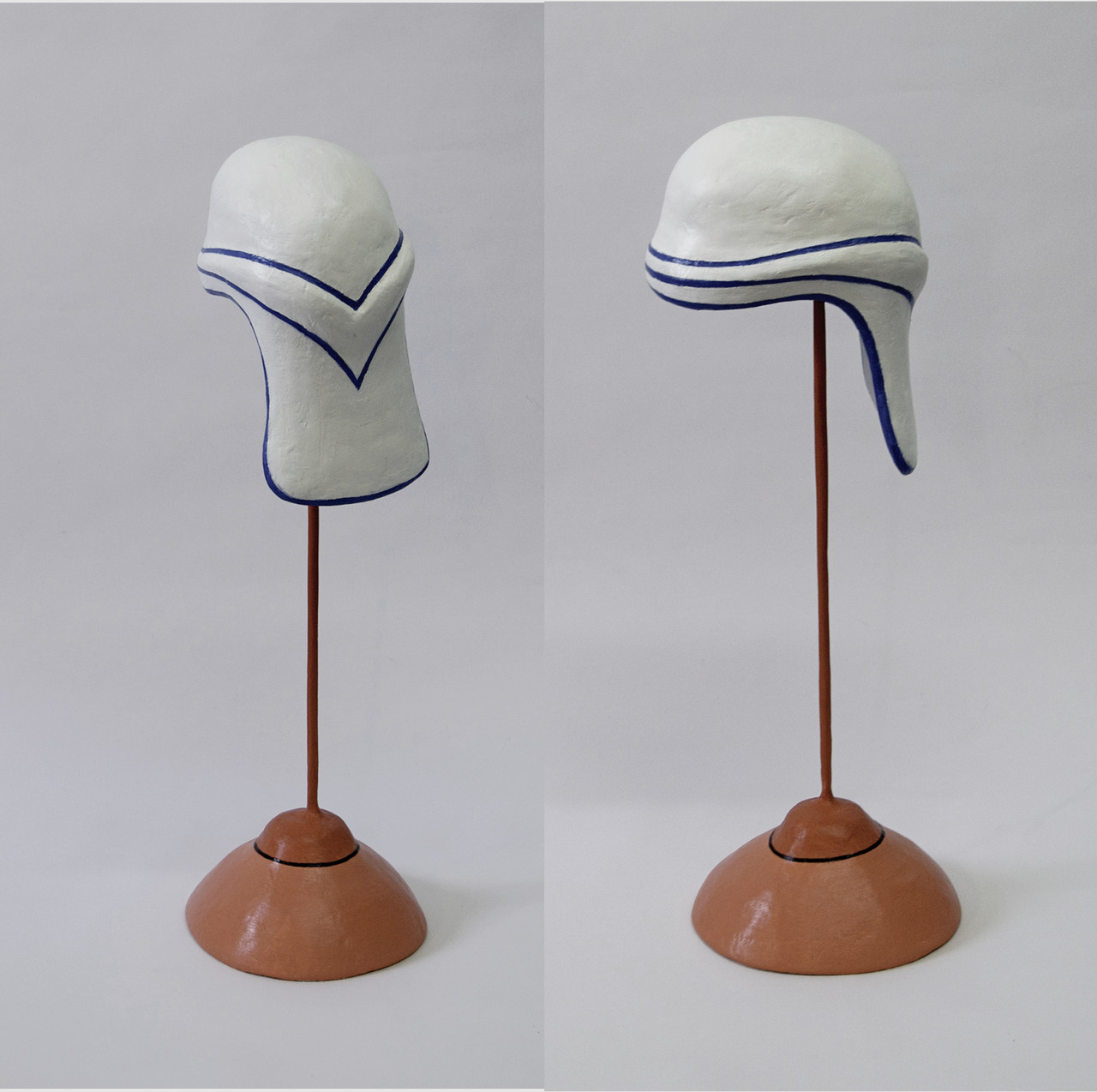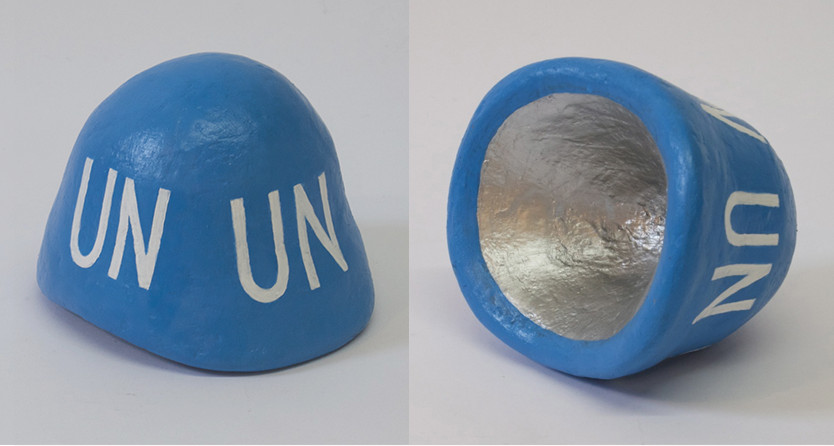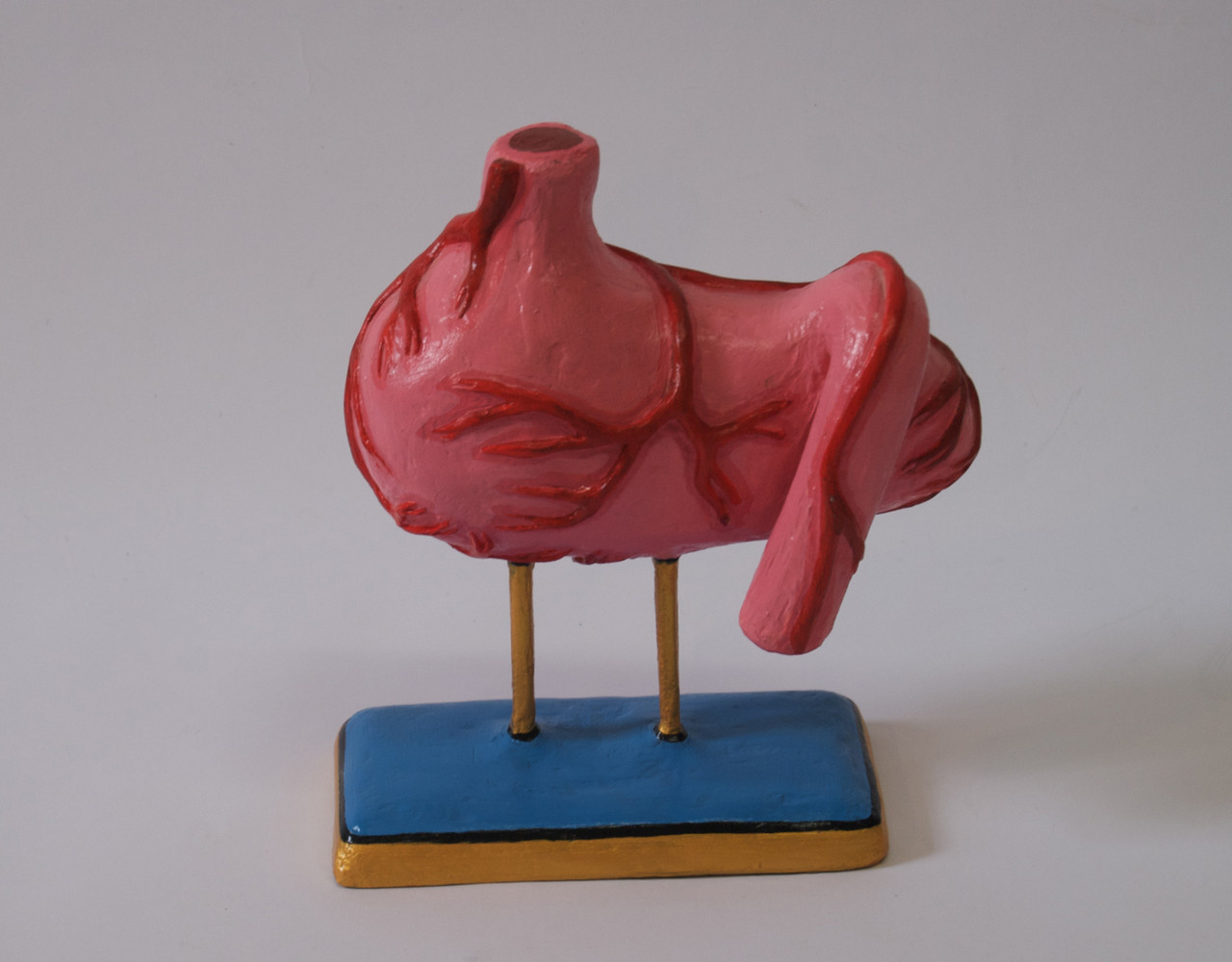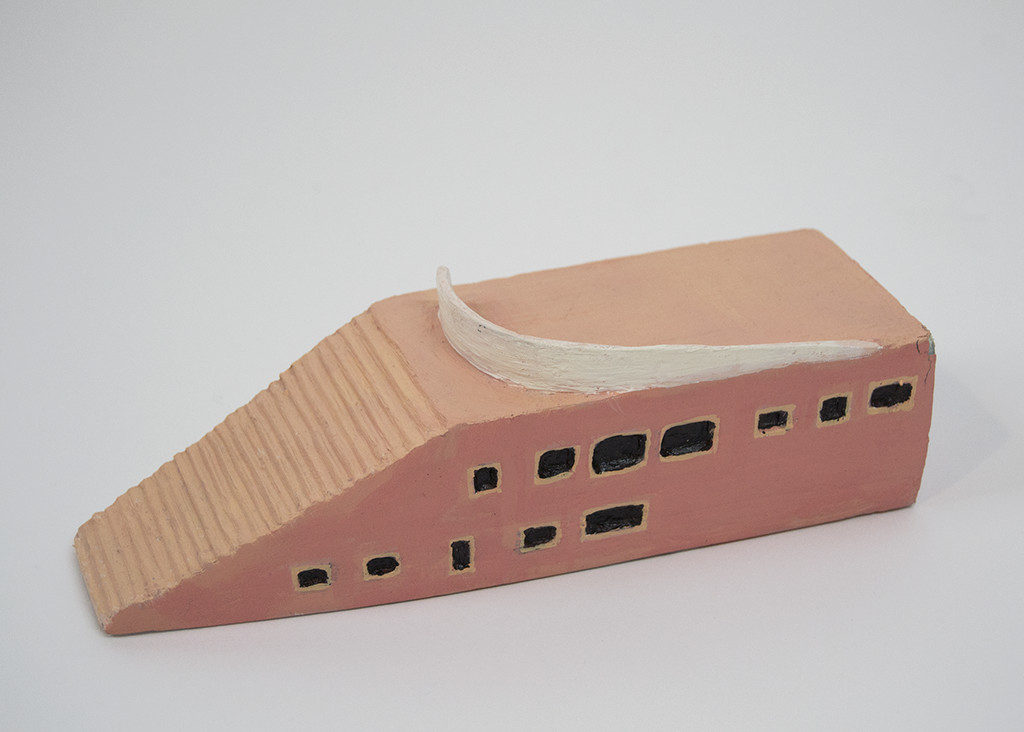What is my work about?
I produce sculpture, based on vernacular forms, that are animated by psychic forces ? by this I mean both emotional content and metaphysical possibilities. The work takes its inspiration from trinkets, tourist art, and novelty items as well as their spiritual/religious counterparts: the fetish/power object and charm. My work also reflects my interest in the politics of social status and it?s attendant material, since this type of artifact often slips between a designation of the elites and the supposed poor taste of the nouveau riche or the middle class. Finally, the work operates by marrying a number of cultural references to describe and induce specific inner-states. My vocabulary draws from the imagery of politics, fashion, home d?cor and architecture.
I’m currently working on a sculpture of a suite of armor. It’s inspired by Klaus Theweleit’s “Male Fantasies, male bodies: psychoanalyzing the white terror”.
Artist Statement
I am interested in the interplay between strict materialism and metaphysical theorizing. When I produce my work, I think about the physical exertion and the general wrestling with the substance of the sculpture. But I also think that I am maybe investing the matter with spirit or that there is some sort of animate quality in the sculpture that I am helping to bring about.
One of my newer pieces, “Laissez-‐ Passer and the Hermit Cave,” illustrates the tension created between a strict materialism on one hand and a sideways consideration of the metaphysical on the other-‐. On one side of the sculpture is depicted a laissez-‐passer, a United Nations pass that allows the holder to cross any international border. On the other side is a hermit’s cave, a place of spiritual contemplation. The laissez-‐passer empowers locomotion in a material world bisected by political and social borders, the hermit cave allows movement in the metaphysical world delineated by belief.
A matrix of references is the scaffolding upon which most of my production rests. I base “Tabernacle” on the peacock chair I had in my house growing up. There is a photo of my sister and me cradled on each side of my mother (younger then than I am today). She is poised radiantly on it. The chair is a signifier of bohemian spirituality that came of age in the Seventies and which non-‐committedly pervaded my childhood environment. It came in successive waves of Subud, TM, EST, and later, Lifespring. As I’ve gotten older, and with my mother’s death, I have grown nostalgic for it. The chair is also featured in a famous TV ad of the Seventies. Geoffrey Holder is sitting on it as he explains why 7-‐Up is the “Uncola” in his Trinidadian accent. Holder also played Baron Samedi in the 1973 James Bond film “Live and Let Die.” Baron Samedi is a Voodoo incarnation of death. For me, the chair is caught up in this semantic web of death and its consolations. Although I often take a satirical view of self-‐actualization and religious interpretations of the afterlife, I must admit that I could possibly be a believer.
I am similarly ambivalent about psychology. “The Couch” is a diminutive rendition of Freud’s storied sofa -‐-‐ the ground zero of the 20th century’s conception of the self. The piece both acknowledges the fate of Freud’s shrunken reputation, but also the enduring power of the Freudian narrative. As a stand in for psychoanalysis, it is both esteemed and mocked. It also seems appropriate to turn Freud’s couch into an objet d’art since Freud himself littered his office with small objects from antiquity, (aka tchotchkes.) “The Couch” presented as a tabletop conversation piece is like a snake eating its own tail.
Similar operations are at work in “Shofar” and “The Wall,” a rendition of the last remnant of the second temple in Israel, a.k.a. the “Wailing Wall.” It was somewhat sacrilegious to render these two symbols of Judaism as sculpture but I was testing whether or not some of the specialness of the originals were transferable and at the same time attempting to exert some control over the primordial matter of Jewish identity.
If I posit that such “specialness” does exist, then “Cash Money,” “Lenz” and “Slipper” act as charms to either ward off or induce various worldly phenomena, i.e. wealth, madness, compassion, physical beauty/prowess, etc.
A similar concern for religion is present in “Priestess.” In this case, a Mrs. Roper-‐ type character (from “Three’s Company”), one who is so easily dismissed as a figure of fun on the TV show, is in the throes of an ecstatic state (perhaps being “ridden” by a Lao). Unsettling, but not outside the realm of possibility as North American religious practices go ever farther afield in search of gratification. What made Mrs. Roper a tragic character was her frustrated libido, in this sculpture I reimagine her sexual energy re-‐directed as spiritual power.
The cabrón series is an example of another analogous element of my work – an interest in the interlocking and overlapping associations within particular words or images. Cabrón is a word used in the Caribbean, Mexico and throughout Latin America. On the most superficial level, it means male goat, but the word can take on a multiplicity of meanings from benevolent (“buddy”) to offensive (“cuckold”). Cabrón #1, 2 and 4 combine the suggestions of phalluses, hunting trophies, infant’s rainbow tower toys and icons. The confusion of form is linked to a word that has a multitude of competing (confused) meanings. A similar function is at work in “Bird of Paradise.” The name of the flower is so apt that it can take precedence over our perception. “Stomach” operates on the level of visual confusion as the organ is transformed into a strutting rooster. At the same time, I created it as a milagros (folk charm) to both depict and cure some digestive issues I was suffering from.
A concern for identity and construction of the self is present in almost every one of my pieces, from “Tottenham Hotspurs” – the football club in north London colloquially referred to as the “Yid Army” – to the T-‐shirts and other works depicting clothing. Clothing helps us negotiate between our private concerns and our public presentation, serving as our armor and our amulets. The humbleness of the T-‐shirt, in particular, bellies its great cultural importance, mostly by allowing us to constantly message the outside world through text and image. Clothing, like other objects my work represents, contains power in both its material and metaphysical forms.
CV
EDUCATION
2003
MFA, Hoffberger School of Painting, Maryland Institute College of Art, Baltimore, MD
1994
BA, English, University of Wisconsin, Madison,
SELECT EXHIBITIONS
2014
Relic, Curator Ginger Schulick Porcella, ISE Cultural Foundation, NY, NY
2013:
Green Go’s in El Barrio, Curator Alejandro Guzman, Taller Boricua, NY, NY
2012
Here and Everywhere: NYC Area MICA Alumni Exhibition, Curator Collette Robins, Art’s Connect NY, NY
2010
I’ve Gone Looking for That Feeling Everywhere, 6th and I Historic Synagogue, Washington, DC
2008
Forming Lines, Like the Spice, Brooklyn, NY
2007
Of the Painted Image, Curator David Stanger The American Jewish Museum, Pittsburgh, PA
Okami Dreams: Seth Cohen and Naomi Namba, Curator Lisa Schilling, Repetti, LIC, NY
Organized Religion, Like the Spice, Brooklyn, NY
2006
Turn around and Stick it Out, Curator Liz Brown, The Golden Street Gallery, New London, CT
2005
Sundown, curator by Eric Lopresti, Broadway Gallery, NY, NY
2004
Anonymous, Washington Project for the Arts, Washington, DC
2003
Figurative Paintings, Fraser Gallery, Washington, DC Covert, Curator William Downs, the Whole Gallery, Baltimore, MD
2002
War, Curator John Yau, MICA, Baltimore Maryland
1998
2nd Annual Exhibit, Juror Ken Oda, Eklektikos Gallery, Washington, DC
CURATORIAL PROJECTS
2014
Mammoth, Chashama, Harlem Gallery
2013
MICA pairs, 92nd Street Y, Tribeca WI AWARDS
2003
Hoffberger Graduate Fellowship
RELEVANT WORK EXPERIENCE
2007-‐2012: Associate Director, Exit Art

